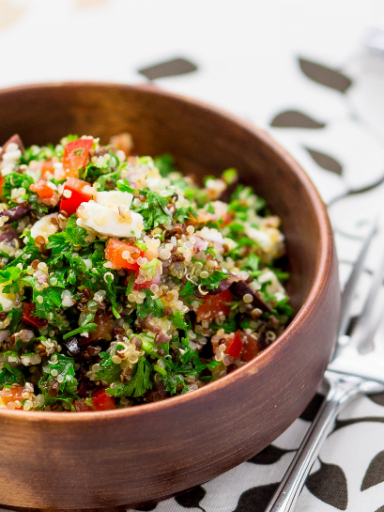Widely used in the kitchen for various preparations, vegetable oils exist of many types and each has peculiar characteristics. Let’s find out what are the best oils to use in the kitchen, their nutritional properties, and what are the best uses. In recent years there has been an increase in the types of oil sold at the supermarket, and choosing the most suitable for feeding becomes quite complicated.
We will try to compare the most used ones, and to understand the differences between them. Vegetable oils can be beneficial or, on the contrary, harmful depending on how much we consume and the use we make of them.
Vegetable oils are nothing more than liquid fats at room temperature. They are obtained by cold pressing or pressure or by solvent extraction, from the fruits or seeds of the plants.
Quality oil has been obtained by cold pressing as this extraction method does not alter the nutritional characteristics of the oil so fatty acids, vitamins, and antioxidants such as polyphenols that have anti-inflammatory action remain intact.
They also do not contain traces of chemicals used for bleaching or deodorization. It is important to choose an oil extracted from plants grown organically, so as not to have traces of pesticides used in traditional agriculture.
From a nutritional point of view, the ideal would be to consume oils only raw to benefit from all the nutrients that would be altered with cooking, however, there are oils more suitable than others for cooking as they are more resistant.
In fact, the various oils on the market have quantitatively and qualitatively different nutritional characteristics that naturally condition the use that can be made of them, whether to use them exclusively raw or if they are ideal for cooking.
Vegetable Oils To Use In The Kitchen
Vegetable oils have unique healthy properties, so much so that some, such as extra virgin olive oil, must be included in our diet every day. Some oils are more suitable for cooking than others, and this depends on the antioxidant content and fatty acid composition, which determines the so-called smoke point.
The resistance of an oil to oxidation and therefore to degradation and rancidity is determined by the degree of saturation of fatty acids. Saturated fatty acids have single bonds, monounsaturated ones have double bonds, and polyunsaturated fatty acids have double bonds. Double bonds make fatty acids more sensitive to heat, while the most resistant are saturated and monounsaturated.
For this reason, oils with a high content of polyunsaturated fatty acids should not be used in cooking, because harmful substances would be formed. The smoke point of the oil is the temperature at which it begins to decompose. Most vegetable oils contain few saturated fats and are predominantly mono and polyunsaturated. The latter is preferable, and raw, thanks to their benefits for cardiovascular health. Let’s see together the characteristics of the most used oils.
Extra Virgin Olive Oil
It is the symbolic oil of the Mediterranean diet, obtained from the pressing of olives, and has a strong and intense taste. Thanks to its composition, extra virgin olive oil is an ally for the reduction of bad cholesterol and the increase of good cholesterol, thus promoting cardiovascular health. It consists of 14% saturated, 73% monounsaturated, and 11% polyunsaturated fats and has a smoke point of 210°C. It also has many antioxidants and protective substances against tumors.
To benefit from these substances it is necessary to use them raw, however, they can be used for cooking. In fact, several studies have shown that it is a fairly heat-resistant oil. A study conducted on two varieties of extra virgin olive oil observed the changes that occurred after 36 hours at a temperature of 180 ° C.
Heat treatment decreased antioxidants, particularly tocopherol, and polyphenols, while fatty acids such as oleic acid and fats such as sterols and squalene demonstrated high oxidation stability. So extra virgin olive oil can also be used for cooking, but many avoid it because due to its strong flavor, it alters the flavor of foods. Extra virgin olive oil should be stored in a bottle tightly closed by the dark glass, away from light and heat.
Flaxseed Oil
is mainly made up of polyunsaturated fatty acids of the omega-3 and omega-6 series so it is a valid aid for heart health, as it reduces high cholesterol. It is also rich in antioxidants that protect against oxidation damage. Due to its composition, this oil deteriorates easily so it is not suitable to be used for cooking, but it is fine if used cold. It has a very delicate flavor and therefore does not alter the flavors.
It can be used, for example, to dress salads. It tends to go rancid easily, taking on a bitter taste, so it should be stored in the refrigerator in a dark glass bottle. Flaxseed oil is widely used in cosmetics, especially to make compresses on the hair, as it makes them soft and shiny.
Hemp Seed Oil
The hemp seed oil obtained by cold pressing has a more or less intense green color, while the refined one is very clear as it has lost most of the beneficial components. This oil has a more intense flavor than flax. Due to the high content of polyunsaturated fatty acids, hemp oil deteriorates easily in light and heat so it should be stored in the refrigerator in a dark glass bottle.
Because of this characteristic, hemp oil is not suitable for cooking. From a nutritional point of view, hemp seed oil has an excellent balance in the ratio of omega 3 to omega 6 polyunsaturated fatty acids which turns out to be 3 to 1. For this reason, hemp seed oil is useful to prevent cardiovascular diseases caused by an excess of cholesterol because its consumption is able to reduce bad cholesterol levels.
Sesame Oil
Sesame oil is rich in polyunsaturated fatty acids of the omega 3 and omega 6 series, which reduce cholesterol and triglycerides. In particular, it has 14% saturated fatty acids, 40% monounsaturated, and 42% polyunsaturated so it is not heated stable and should be used cold to dress vegetable salads or cold dishes. The taste of this oil is delicate but sweet.
Corn Oil
Corn oil has a high amount of polyunsaturated fatty acids (especially omega 6) which represent about 55%, while saturated and polyunsaturated are respectively 13% and 28%. For this reason, it is used to prepare margarine. Its use is beneficial for cardiovascular health. The smoke point of corn oil is about 160°C, so ideal for use raw. The taste is more delicate but not too much.
Sunflower Oil
Sunflower oil is rich in polyunsaturated fatty acids (40%) in particular linoleic acid and, if cold pressed, is a very important source of vitamin E which is an antioxidant and therefore protects against oxidative damage of free radicals. It is widely used instead of olive oil to prepare sweet and savory dishes or vegan mayonnaise for its very neutral flavor.
Contrary to popular belief, sunflower oil is not suitable for frying as it has a very low smoke point, less than 130 ° C. It should therefore be used raw and chosen as oil obtained by cold pressing benefit from the protective effects of vitamin E.
Extra Virgin Coconut Oil
Lately, the use of coconut oil, used a lot in Asia, is gaining ground in the kitchen. Coconut oil boasts extraordinary properties to nourish the hair, but nutritional properties also abound. It is an oil rich in saturated fats, which make up 85% while monounsaturated is 6% and polyunsaturated is 2%.
Coconut oil of particular types of fats, medium-chain triglycerides, which are absorbed directly in the intestine and are used to produce energy or transformed into ketones.
They are able to stimulate the metabolism and do not cause an increase in bad cholesterol, rather they increase the levels of good cholesterol. Coconut oil would also have satiating power and antibacterial properties.
Virgin coconut oil does not have a very high smoke point(although higher than other oils), but it is 175°C despite its saturated fatty acid content. The taste of unrefined coconut oil is exotic, while the refined one is deodorized taking on a neutral flavor.
Peanut Oil
Peanut oil has a composition similar to olive oil: it contains 1% saturated fatty acids, 46% monounsaturated, and 32% polyunsaturated. Compared to olive oil it has a milder flavor so it is often used in the preparation of cakes. The smoke point of peanut oil is 180 ° C for unrefined oil, while refined oil, which is often found on the market, can also reach 230 ° C. These characteristics make it a good oil for cooking.
Pumpkin Seed Oil
Rich in unsaturated fatty acids, the oil obtained from pumpkin seeds is very sensitive to heat and light so it should be stored in a cool place and in dark glass bottles. Its consumption, cold, has a beneficial effect on cardiovascular health. This oil is also not suitable to be used for cooking.
Frying Oil: Which One To Choose?
Everything you need to know about Frying should be avoided as bringing the oils to high temperatures forms toxic and in some cases even carcinogenic substances that also irritate the gastric and intestinal mucous membranes and fatigue the liver. The fried causes the oxidation of fatty acids, and this favors the formation of atherosclerotic plaques.
However, eating a fry once in a while does not hurt, especially if we choose the right oil and combine a nice plate of fresh and colorful vegetables, to fill up on antioxidants. As we have seen, the resistance of an oil to high temperatures depends on its smoke point and therefore on the composition of fatty acids.
The best frying oils are those with the highest smoke point and are extra virgin olive oil and peanut oil. The first is excessively expensive and then alters the flavors of food. Peanut oil, on the other hand, does not give any flavor. The important thing is never to reuse the oil a second time because highly carcinogenic substances are formed.
The Stability Of The Oil
When cooking something on the stove, we must use oils that are stable, that is, that they do not rust or become.
When the oil undergoes oxidation, it reacts with oxygen to form free radicals and toxic compounds that you absolutely should not consume.
The most important factor in determining the resistance of an oil to oxidation and rancidification for both low and high temperatures is the degree of saturation of the fatty acids present in its formulation.
Saturated fats have simple bonds in their fatty acid molecules, and monounsaturated fats possess one and polyunsaturated fats have two or more.
Without wanting to make you fall asleep with scientific speeches, all you need to know is that oils with two fat molecules are sensitive to heat and consequently are not healthy for cooking.
Ironically, saturated and monounsaturated fats are very heat-resistant, and oils rich in polyunsaturated fats should not be used for cooking


